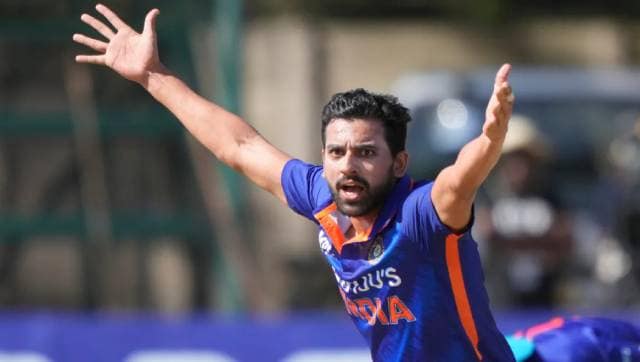The BCCI, in its review meeting on 1 January, Sunday made several key recommendations for the selection of players going forward. The Player’s fitness, workload management, and availability of players were at the centre of the discussion.
In light of recent happenings – several key players such as Jasprit Bumrah and Ravindra Jadeja missed out on the T20 World Cup; and skipper Rohit Sharma, as well, missing Tests owing to injury – player’s fitness has definitely been a concern for the Indian national squad.
Accordingly, the BCCI top brass has brought back the erstwhile Yo-Yo Test and also introduced the Dexa Test for the selection of players.
What did the BCCI announce?
As a part of its key recommendations, one of the pointers of the BCCI statement read as follows –
“The Yo-Yo Test and Dexa will now be part of selection criteria and implemented in the customized roadmaps of the central pool of players.”
While there is large familiarity with Yo-Yo Test, DEXA Test is new to the fans and shall be explained. However, let us have a recap of the Yo-Yo Test first.
The Yo-Yo test in ultra slow-mo #INDvNZ – batch 2 : @ashwinravi99 @imVkohli @SDhawan25 @ajinkyarahane88 @MdShami11 pic.twitter.com/2UkBBtZcbn
— BCCI (@BCCI) September 18, 2016
What is Yo-Yo Test and how does it work?
The Yo-Yo Test is a variation of the Beep Test and is used extensively in stop-and-go sports such as cricket, football, etc.
Yo-Yo Test includes running between two sets of cones set apart at a distance of 20 metres.
At the sound of the first beep, the player has to start and reach the other cone before the second beep. The player has to return to the initial cone before the sound of the third beep. The return trip marks the completion of one shuttle.
Between each shuttle, a recovery period is allotted for some specific seconds. The duration to complete the shuttle decreases as the level increases. The number of shuttles also increases with the level.
Once a player misses two beeps, their test ends.
India had their benchmark set at 16.1 when the test was introduced in 2016 and it was subsequently increased to 17.1 in 2021.
It will be worthwhile to see how the BCCI proceeds with this approach and set a benchmark going ahead.
Let us understand the DEXA Test now.
View this post on Instagram
What is DEXA Test?
The DEXA or the Dual-energy X-ray absorptiometry was made mandatory for injured players who make their return to the playing squad.
DEXA is a scientific method to determine the Bone Mineral density of a player using a special technique known as spectral imaging. Two X-Ray beams at different energy levels are directed towards the bone of the player to reveal the bone density and mineral content.
DEXA is an international standard and widely accepted test. A 10-minute test measures the total body fats and also breaks down the bone mass, fat tissue, and muscles in the body of a player.

How will DEXA prove important to determine a player’s fitness?
There have been several cases wherein an injured player was rushed to the playing setup and injured themselves again. Jasprit Bumrah is the prime example of it, who played a T20I against Australia, only to be sent back for recovery ahead of the T20 World Cup.
Deepak Chahar has also been injured multiple times.
A player’s bone strength and mineral density takes a hit when they are injured. Players maintain bone strength and mineral density when they train regularly, but tend to hamper that when recovering from an injury.
The DEXA will act as a precautionary step for injured players returning to action and possibly save them from a re-injury. The idea is to ensure that the player has recovered to a substantial effect before he joins the playing XI and performs in a professional scenario.
Read all the Latest News, Trending News, Cricket News, Bollywood News, India News and Entertainment News here. Follow us on Facebook, Twitter and Instagram.
from Firstpost Sports Latest News https://ift.tt/HIVPTKv
No comments:
Post a Comment